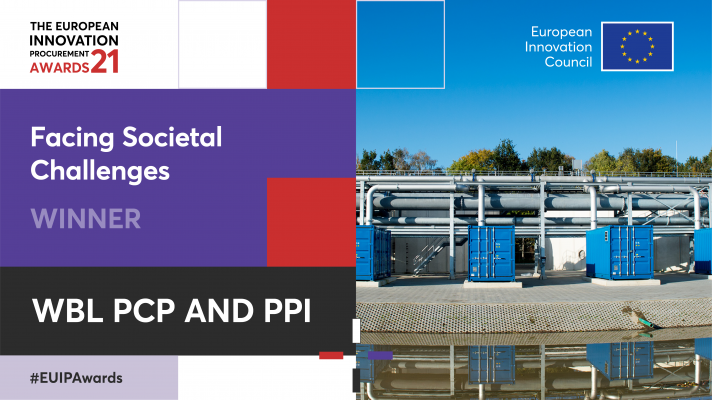Within a full-blown integrated PCP & PPI procurement project approach tackling innovation and circularity, WBL is implementing machine-learning applications on a big data platform to monitor the performance of all WBL sewage pumping stations and detect abnormal behavior at an early stage. The water authority will be managing a digital twin, a virtual copy of the entire wastewater treatment system. Process operators in the Central Control Room of WBL will be obtaining information in an intuitive manner to control the system. By using machine learning and artificial intelligence for the entire system, its performance will improve continuously. This also allows for more efficient management and anticipates the need for maintenance, currently the largest expense for water authorities. The implementation and management of developing technologies, based on the cloud, have to run 24/7 for operational support for operators and maintenance staff.
The full-blown innovation procurement project combined three different lots (process automation, security and big data) with a PCP (that builds on and supports the three lots). The PCP results are integrated as part of the big data PPI to support process automation and security. The purchased solution will improve management of wastewater transportation pipelines by allowing WBL to continuously monitor their correct functioning and proactively tackle issues. This full-blown approach helps to avoid the feared valley of death related to R&D procurements, stimulates innovative behavior of the contractors for the three lots, and establishes a measurable public-private partnership, based upon agreed upon KPI’s. It creates a sound base for innovative European based technologies and ensures WBL’s future resilience.
This is a good example of digital and green innovation, adding value to the water chain and tackling cybersecurity challenges. It could not only be replicable in any waste management service in Europe to use predicting digital technologies and a circular approach under a new wastewater management standard, but the integrated PCP & PPI approach could also be replicated in other public sectors.
